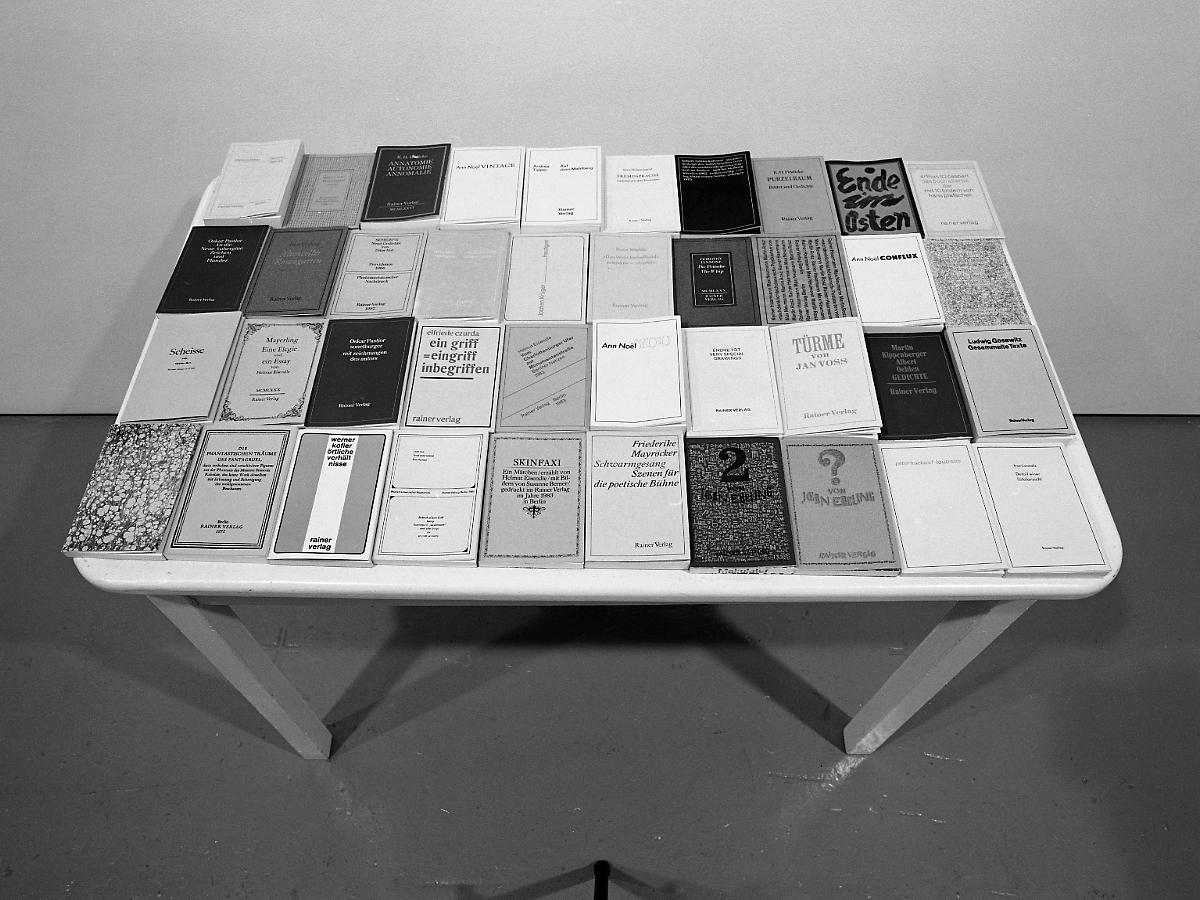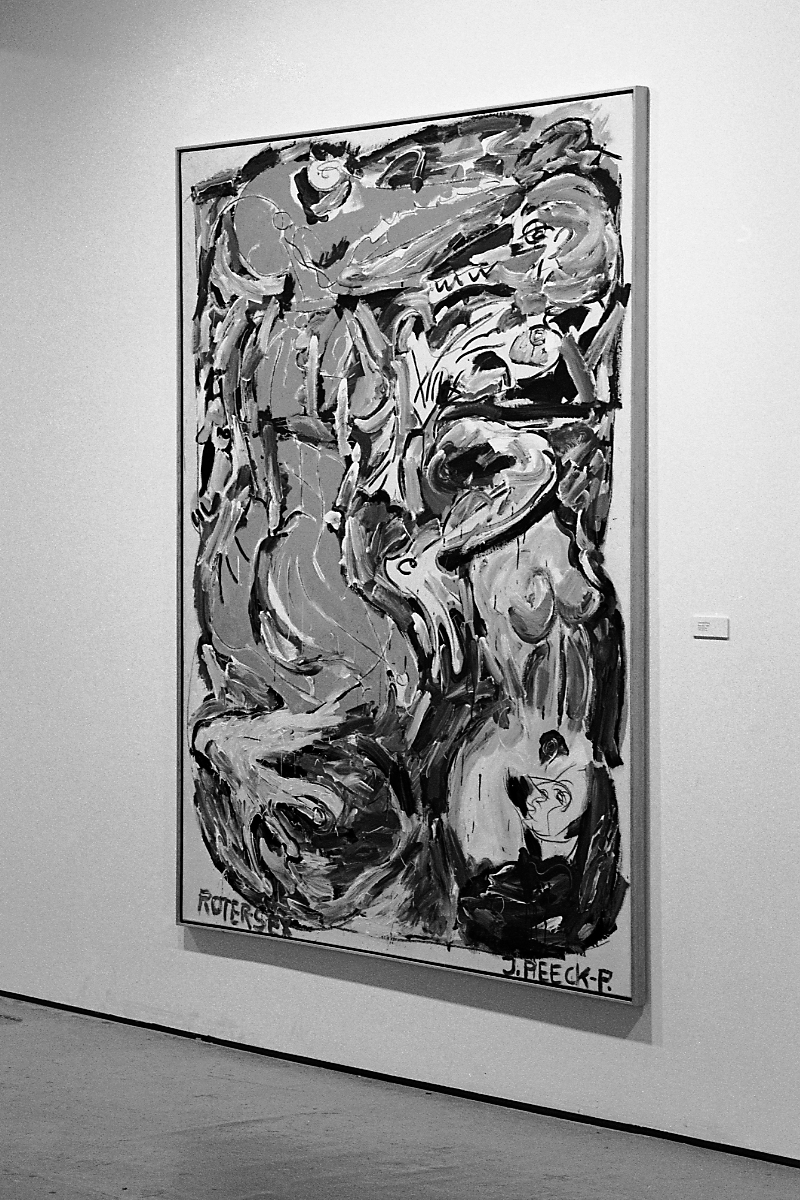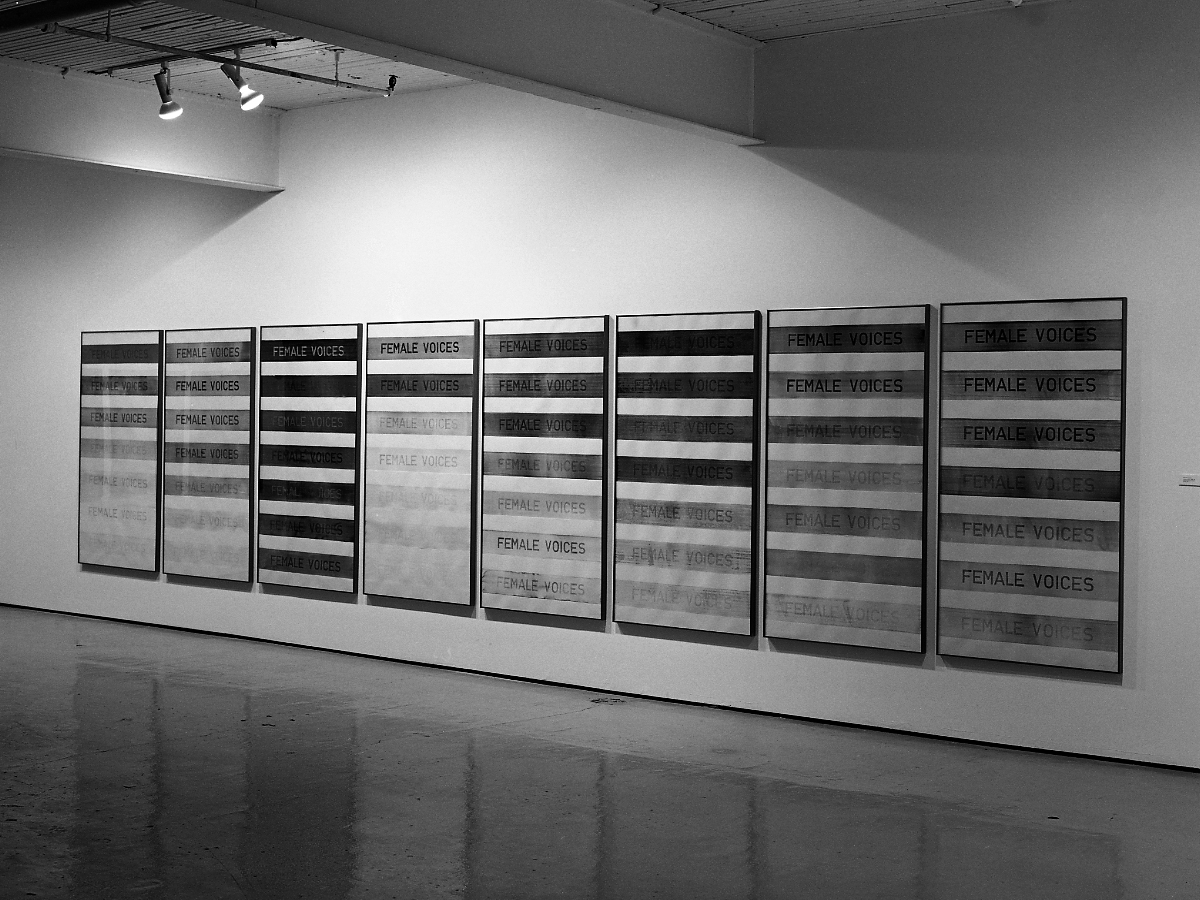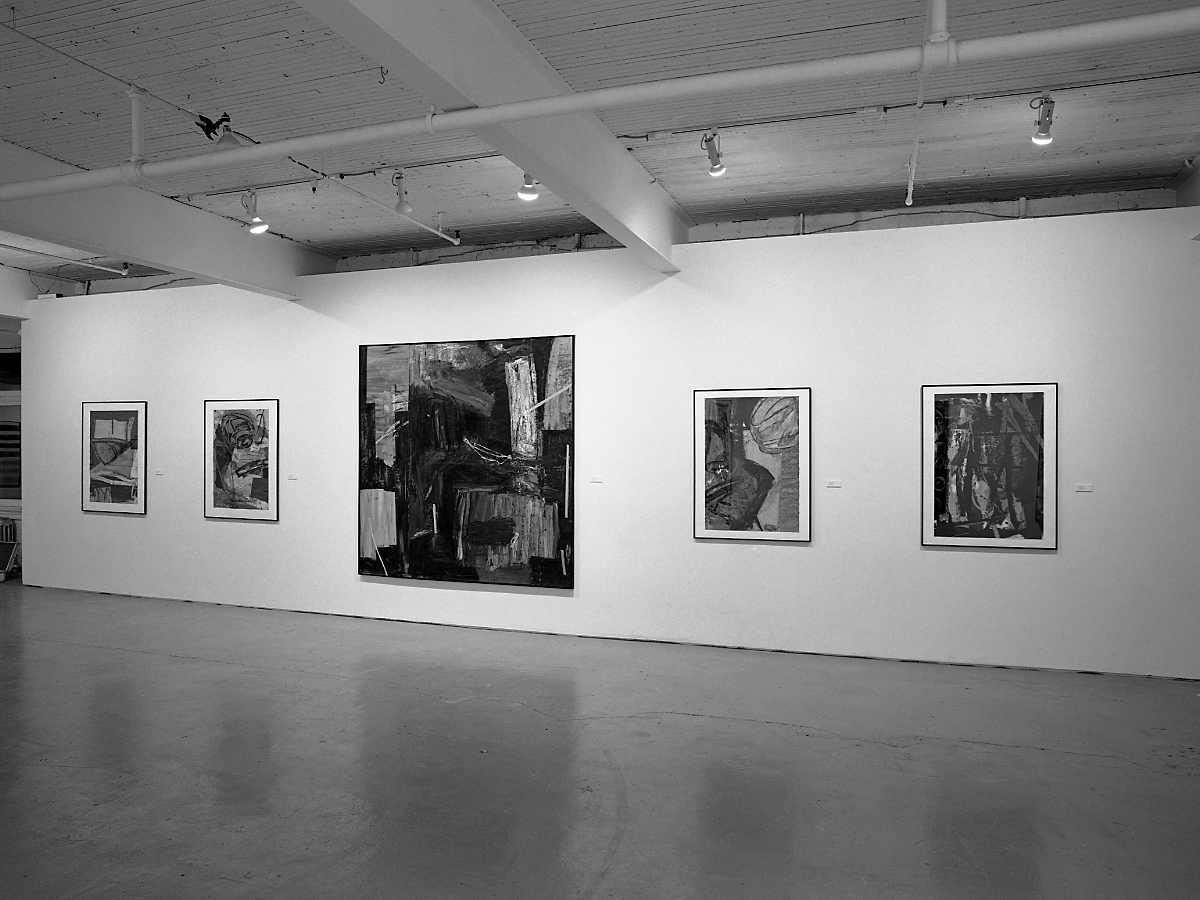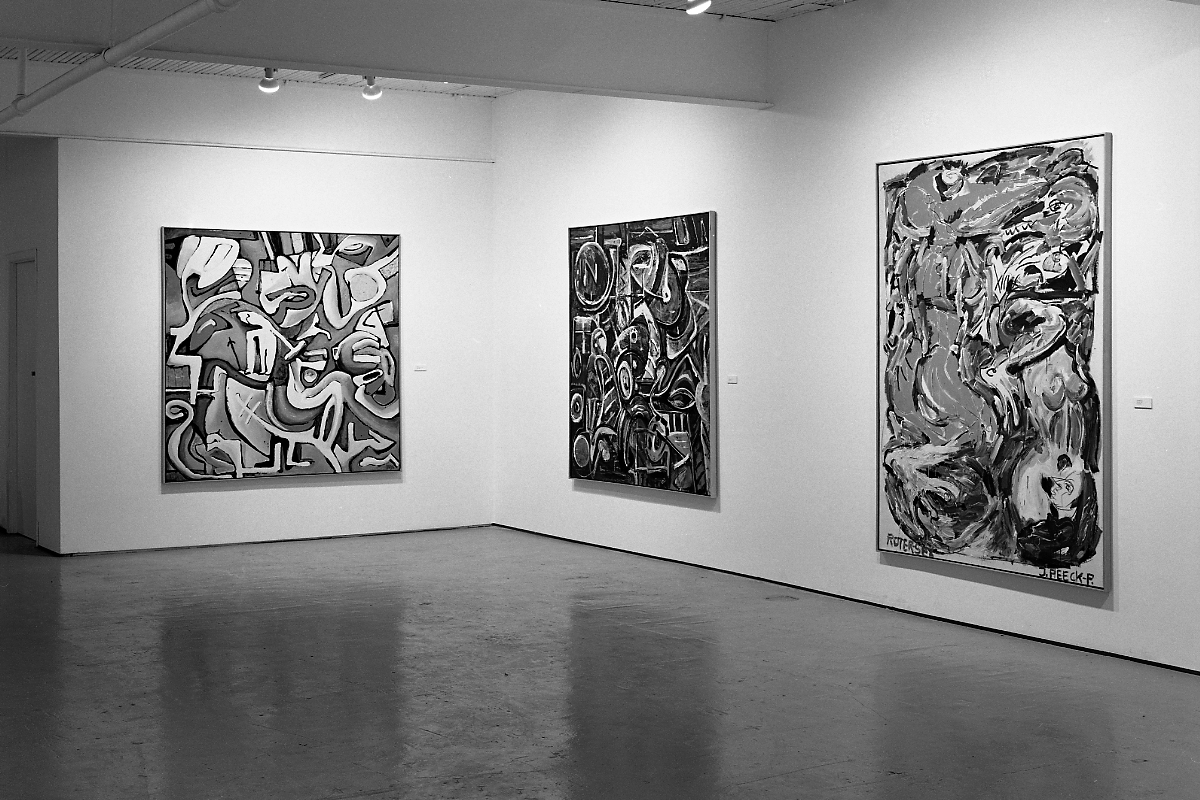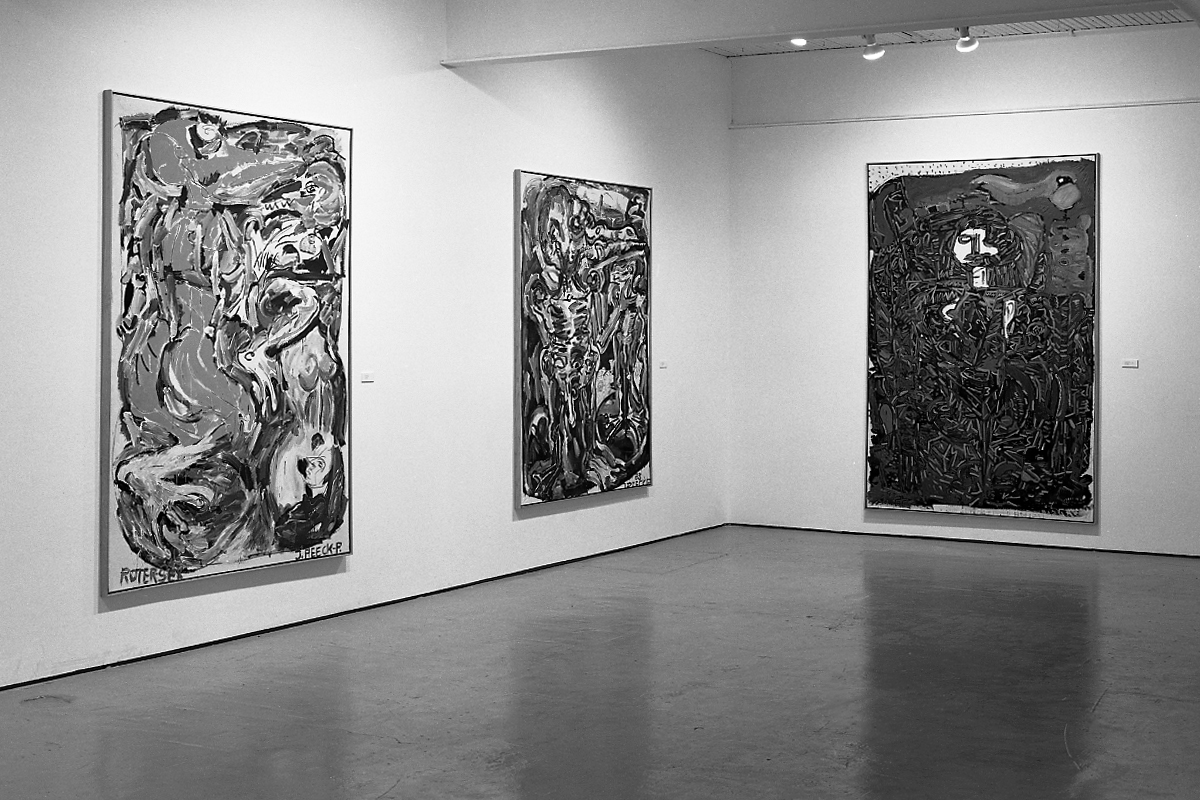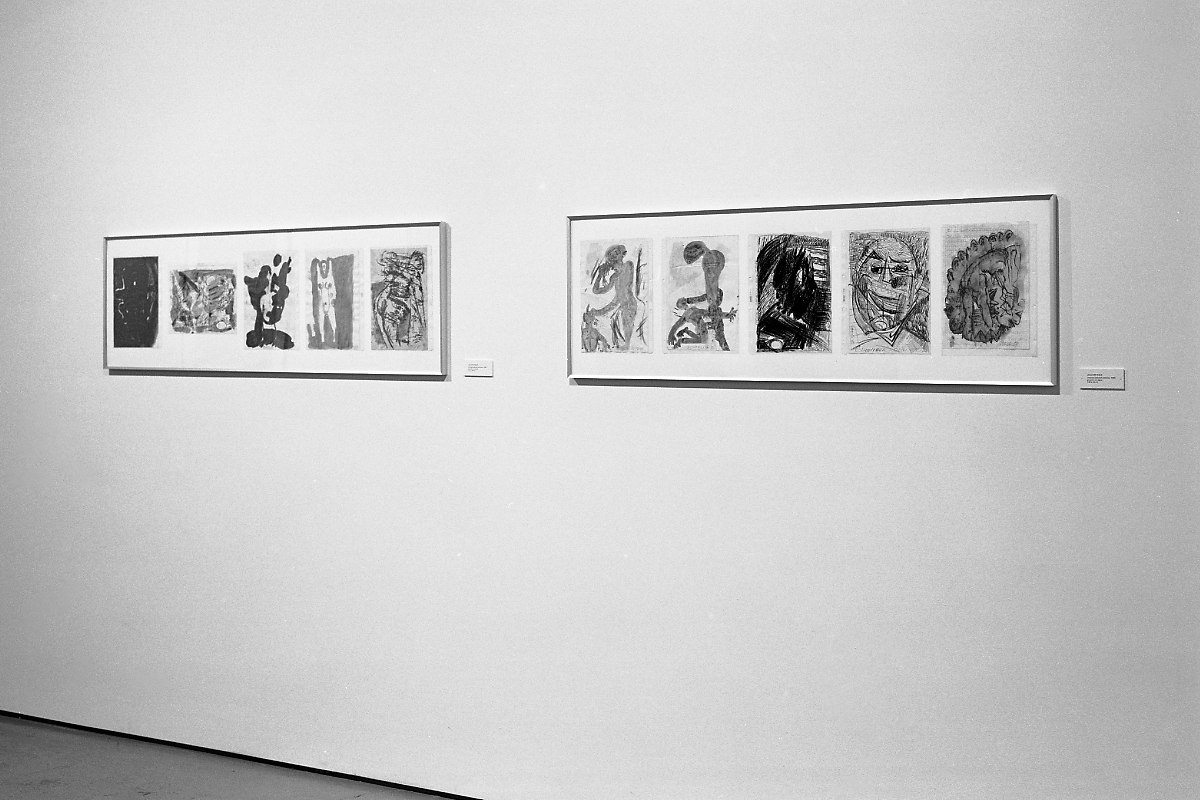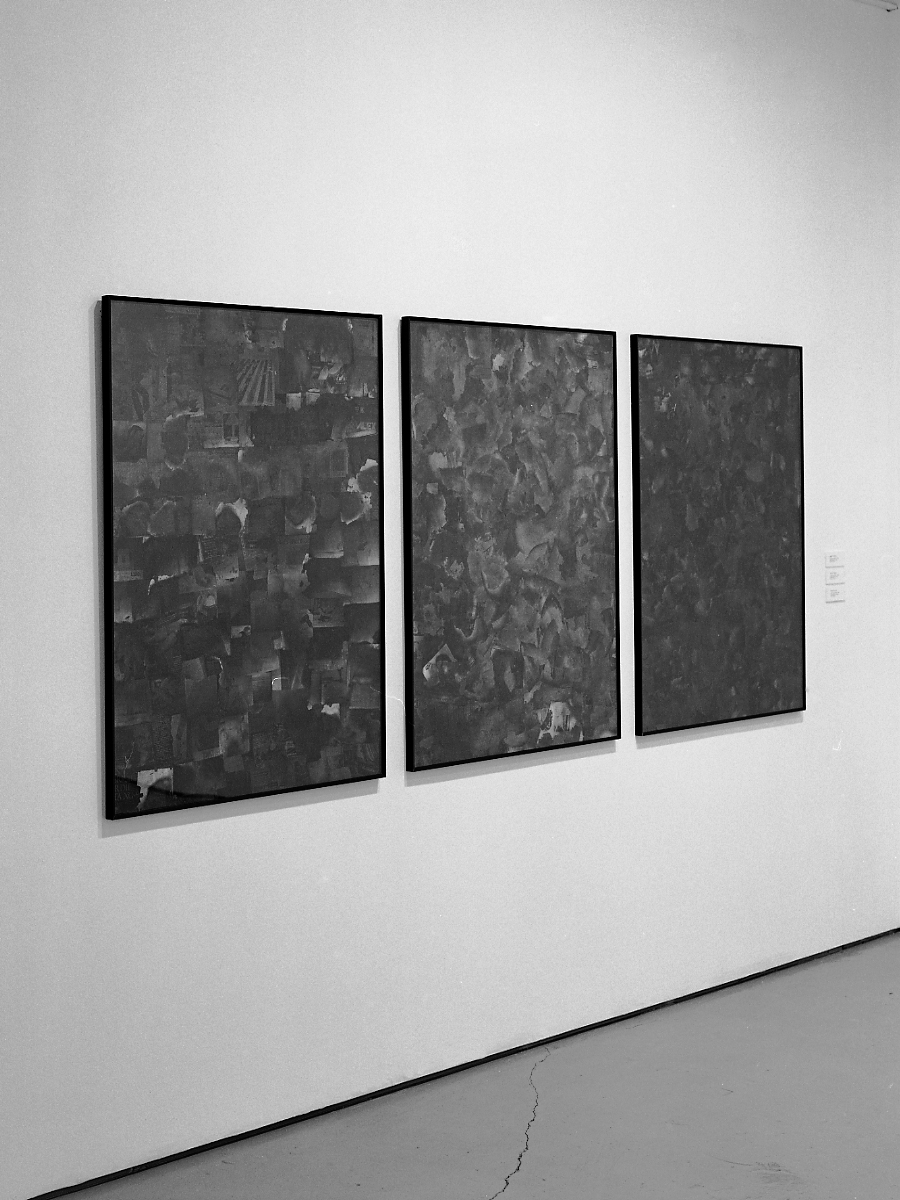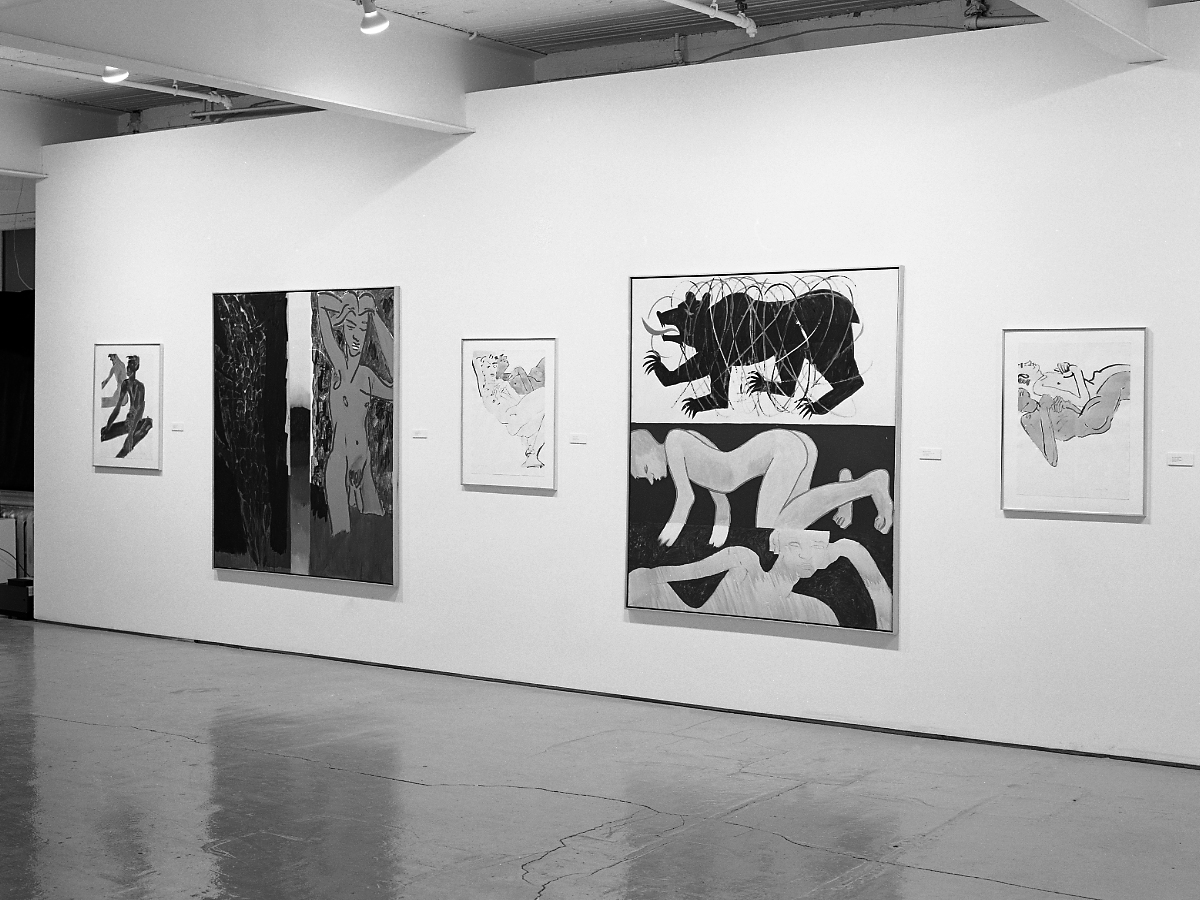Catalogue:
Berliner Aufzeichnungen (Berlin Notes) published by The Walter Phillips Gallery and the Banff School of Fine Arts
This exhibition features recent works on canvas and paper by five artists currently living in West Berlin, including two Canadians, Michael Morris and Vincent Trasov. "Berliner Aufzeichnungen" is intended to provide insight into contemporary practice in Berlin, a venue which has had a major influence on art in the western world, especially in the last ten years.
The work of the five artists included in this exhibition has been described by the curator Lorne Falk as "scratch practice". "Scratch practice", alluding to both the content of the work and the processes employed by the artists, may be seen as an attempt to relocate meaning and aesthetics within the context of human relations.
The exhibition, originating at the Walter Phillips Gallery in Banff, Alberta, is part of a national tour, with showings at Articule Galerie in Montreal September 18 to October 13, 1985, the Vancouver Art Gallery January 16 to March 23, 1986; and the Norman MacKenzie Art Gallery in Regina May 2 to June 15, 1986.
Also included with the exhibition are video works by eight artists and a selection of artists' books published in Berlin by Rainer Verlag. An extensive catalogue with short essays on contemporary art practice in Berlin will accompany the exhibition.
Divinely Decadent or Truly Novel?
By John Bentley Mays
Globe and Mail, December 1985
West Berlin is, by all accounts, a neurotic among cities -- intensely self-absorbed, and romantically obsessed by the Wall, its alienated teenagers and other symptoms of its bizarre geographical and political situation. The city seems to have a drag queen's single-minded fascination with survival and style. It appears to be a tiny banana republic with only two cash-crops: pop culture, and its reputation for oddity.
What does it mean to live and work as an artist in such a strange place? Some interesting answers are suggested by a little Toronto show that should be caught before it closes this weekend: Berliner Auf zeichnungen (Berlin Notes), at Mercer Union.
Put together by curator Lorne Falk shortly before his departure last summer from the Banff Centre's Walter Phillips Gallery, this exhibit surveys some recent paintings, drawings and mixed-media works by five artists living, working and pulse-taking in Berlin. In addition, a number of books produced by Rainer Verlag, the avant-garde Berlin publishing house, are on display. A sizable group of new artists' videotapes are available for viewing.
Perhaps significantly, none of the painters represented in the show were born in Berlin. Ricarda Fischer, Joachim Peeck and Yana Yo came to Berlin to study at the Hochschule der Kunste, all studied there with the neo-Expessionist painter Karl Horst Hodicke, and all stayed on. Michael Morris and Vincent Trasov, on the other hand, moved to Berlin a few years ago from Vancouver, where they were founders and moving spirits of the neo dada Western Front Society. With the exception of Morris (who was born in 1942), all the artists are baby boomers.
At first glance, the work in this show is an uncomfortable tumble of information with few unifying traits. The large, lavishly expressive abstractions of Fischer and Yo seem worlds apart from Trasov's quietly intense collages of scorched paper. Morris' cheerily bright, languorous watercolours of nude men contrast sharply with Peeck's crude blinks at Berlin's gay subculture.
Similarly, Hanna Frenzel's serenely abstract videotape called Suspension (1984) and Walter Gramming's harrowing rock 'n' roll fantasia called La Loora (1982-1983) could come from two different planets.
But whatever their stylistic differences, says Falk in his excited catalogue introduction, these artists share at least one thing: a strategy he calls "scratch practice." To "scratch" is to chip away at the wall-dividing high and popular culture, with a view to creating "a language of the moment, engaging real time in the creation of culture."
To be sure, most of what's here illustrates the use-once, throw-away Kleenex culture of Berlin, its obsession with popular entertainment, its nihilism, and so on -- or at least it illustrates the Berlin myth that's been around for decades (remember Cabaret?). In his catalogue over-view of the Berlin art scene, art scholar - Jurgen Schweinebraden has much to say about the "tension and contradiction" in the "city on the edge of the abyss," the "sensuality of intense anger, mixed with the delight of painting," which we are supposed to see in these pictures. And sure enough, the work in the show matches this heated description, point for point.
In fact, that's the unsettling thing about it all: the works of the Germans here fit almost too perfectly the popular North American myth of Berlin, as a hotbed of anxious decadence, empty rebellion and mass badness. Which is coming first here, the myth or the art? Are these pictures merely ads pitched to tourists, or are they examples of a fundamentally new kind of radical artistic practice?
Falk, who has seen much more of this art than we have been given here, has apparently made up his mind on the matter. But for the rest of us to decide what we think about "scratch practice," we need more information. It would be useful to see more work by these five artists and others in their network (especially Matthias Wagner), together with pictures by their mentors in the Berlin scene, such as K.H. Hodicke, Helmut Middendorf and Bernd Koberling. While this show is surely a beginning, in terms of exposing the newest Berlin image making in Canada, it is only a warm-up for the thorough Berlin show we are still waiting for.
The best things here have nothing to do with Berlin culture, and everything to do with sound, straightforward art-making: Vincent Trasov's dark collages of burned paper.
